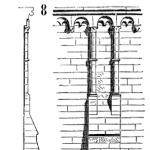
Imagine product or part lifetime as the service time in a self-service system. Suppose you could observe periodic input and output counts of that self-service system, without identifying individual service times. How would you estimate the service time distribution without following individual products or parts from input to output? The maximum likelihood reliability estimator for an M/G/Infinity self-service-time distribution function from “ships” (inputs) and “returns” (outputs) counts also works for nonstationary arrival process M(t)/G/Infinity self-service systems, under a condition! A constant or increasing arrival (inputs or ships) rate satisfies the condition. If you identify returns by failure mode then you could estimate make nonparametric estimates of field reliability by failure mode and quantify reliability growth, without life data, if the condition is satisfied.
[Read more…]












 Ask a question or send along a comment.
Please login to view and use the contact form.
Ask a question or send along a comment.
Please login to view and use the contact form.